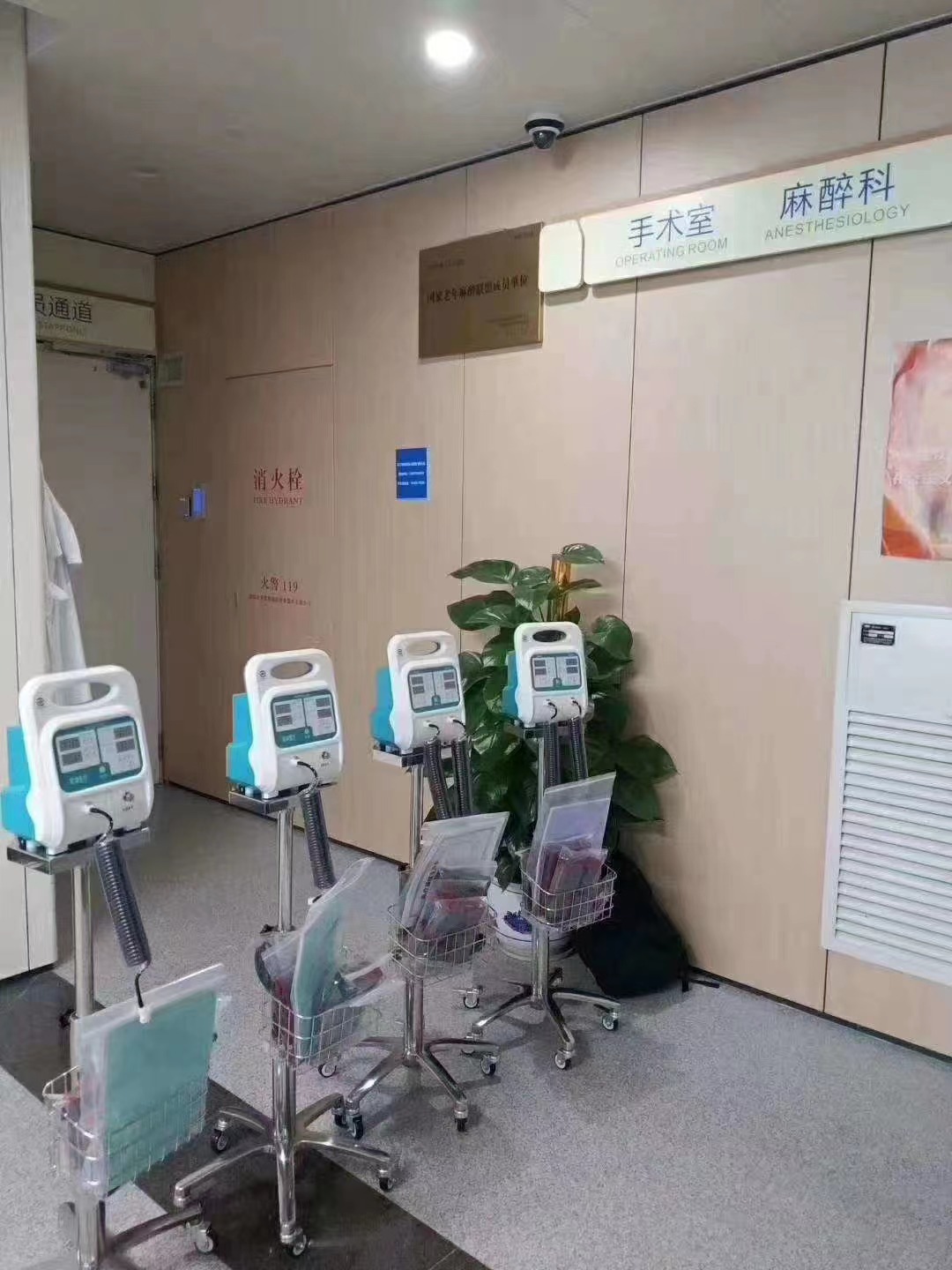Automatic Tourniquet: A Revolution in Hemostasis
 Hemorrhage is a significant risk during surgical procedures and can lead to morbidity and mortality. Surgeons have long relied on tourniquets to achieve hemostasis by applying pressure to the blood vessels of the limb or the surgical site. However, traditional tourniquets are time-consuming to apply, may cause tissue damage, and do not always provide effective hemostasis. The advent of automatic tourniquets has revolutionized hemostasis in surgery by offering a safe, efficient, and reliable solution.
Hemorrhage is a significant risk during surgical procedures and can lead to morbidity and mortality. Surgeons have long relied on tourniquets to achieve hemostasis by applying pressure to the blood vessels of the limb or the surgical site. However, traditional tourniquets are time-consuming to apply, may cause tissue damage, and do not always provide effective hemostasis. The advent of automatic tourniquets has revolutionized hemostasis in surgery by offering a safe, efficient, and reliable solution.
An automatic tourniquet is a device that applies a precise amount of pressure to the blood vessels by inflating a cuff around the limb or the surgical site. It consists of a pneumatic system, a control unit, and a cuff. The control unit regulates the pressure and the duration of inflation, ensuring that the optimal pressure is applied for the required time. The pneumatic system inflates the cuff and maintains the pressure, while the cuff exerts pressure on the blood vessels, preventing blood flow to the surgical site.
Automatic tourniquets have several advantages over traditional tourniquets. First, they are easy and quick to apply, reducing the time required for hemostasis. The control unit can be programmed to deliver the desired pressure and duration, which minimizes the risk of tissue damage and provides consistent and reliable hemostasis. Second, automatic tourniquets can be used in a variety of surgical procedures, including limb surgery, orthopedics, and plastic surgery. They can also be used in emergency situations, such as in trauma cases or in the battlefield. Third, automatic tourniquets reduce the risk of complications, such as nerve damage, by applying a precise amount of pressure and reducing the risk of over-inflation.
There are several types of automatic tourniquets available on the market, including the Zimmer ATS 3000, ZSORTHO Tourniquet , the VBM Tourniquet Cuff, and the Surgicuff. These devices differ in their design, the type of cuff used, and the control unit features. However, all automatic tourniquets share the same principle of applying pressure to the blood vessels to achieve hemostasis.
Despite the advantages of automatic tourniquets, there are also some limitations to their use. First, they require training and expertise to use effectively. The control unit must be programmed correctly, and the cuff must be positioned correctly to achieve the desired hemostasis. Second, automatic tourniquets can cause ischemia, which can lead to tissue damage if not used properly. Third, they may not be suitable for all patients, especially those with peripheral vascular disease or other circulatory disorders.
In conclusion, automatic tourniquets are a significant advancement in surgical hemostasis, providing a safe, efficient, and reliable solution for achieving hemostasis in surgical procedures. They offer several advantages over traditional tourniquets, including reduced time for hemostasis, consistent and reliable hemostasis, and reduced risk of complications. Although they require expertise to use, automatic tourniquets are a valuable addition to the surgeon's armamentarium, providing a safer and more effective way to achieve hemostasis in surgery.
![en]() English
English![af]() Afrikaans
Afrikaans![sq]() Albanian
Albanian![am]() Amharic
Amharic![ar]() Arabic
Arabic![fr]() French
French![es]() Spanish
Spanish![ru]() Russian
Russian![de]() German
German![hy]() Armenian
Armenian![it]() Italian
Italian![ja]() Japanese
Japanese![ko]() Korean
Korean![pt]() Portuguese
Portuguese![hi]() Hindi
Hindi![az]() Azerbaijani
Azerbaijani![ro]() Romanian
Romanian![pl]() Polish
Polish![th]() Thai
Thai![el]() Greek
Greek![eu]() Basque
Basque![en]() English
English![zh-CN]() Chinese (Simplified)
Chinese (Simplified)![zh-TW]() Chinese (Traditional)
Chinese (Traditional)![be]() Belarusian
Belarusian![bn]() Bengali
Bengali![bs]() Bosnian
Bosnian![bg]() Bulgarian
Bulgarian![ca]() Catalan
Catalan![ceb]() Cebuano
Cebuano![ny]() Chichewa
Chichewa![co]() Corsican
Corsican![hr]() Croatian
Croatian![cs]() Czech
Czech![da]() Danish
Danish![nl]() Dutch
Dutch![eo]() Esperanto
Esperanto![et]() Estonian
Estonian![tl]() Filipino
Filipino![fi]() Finnish
Finnish![fy]() Frisian
Frisian![gl]() Galician
Galician![ka]() Georgian
Georgian![gu]() Gujarati
Gujarati![ht]() Haitian Creole
Haitian Creole![ha]() Hausa
Hausa![haw]() Hawaiian
Hawaiian![iw]() Hebrew
Hebrew![hmn]() Hmong
Hmong![hu]() Hungarian
Hungarian![is]() Icelandic
Icelandic![ig]() Igbo
Igbo![id]() Indonesian
Indonesian![ga]() Irish
Irish![jw]() Javanese
Javanese![kn]() Kannada
Kannada![kk]() Kazakh
Kazakh![km]() Khmer
Khmer![ku]() Kurdish (Kurmanji)
Kurdish (Kurmanji)![ky]() Kyrgyz
Kyrgyz![lo]() Lao
Lao![la]() Latin
Latin![lv]() Latvian
Latvian![lt]() Lithuanian
Lithuanian![lb]() Luxembourgish
Luxembourgish![mk]() Macedonian
Macedonian![mg]() Malagasy
Malagasy![ms]() Malay
Malay![ml]() Malayalam
Malayalam![mt]() Maltese
Maltese![mi]() Maori
Maori![mr]() Marathi
Marathi![mn]() Mongolian
Mongolian![my]() Myanmar (Burmese)
Myanmar (Burmese)![ne]() Nepali
Nepali![no]() Norwegian
Norwegian![ps]() Pashto
Pashto![fa]() Persian
Persian![pa]() Punjabi
Punjabi![sm]() Samoan
Samoan![gd]() Scottish Gaelic
Scottish Gaelic![sr]() Serbian
Serbian![st]() Sesotho
Sesotho![sn]() Shona
Shona![sd]() Sindhi
Sindhi![si]() Sinhala
Sinhala![sk]() Slovak
Slovak![sl]() Slovenian
Slovenian![so]() Somali
Somali![su]() Sudanese
Sudanese![sw]() Swahili
Swahili![sv]() Swedish
Swedish![tg]() Tajik
Tajik![ta]() Tamil
Tamil![te]() Telugu
Telugu![tr]() Turkish
Turkish![uk]() Ukrainian
Ukrainian![ur]() Urdu
Urdu![uz]() Uzbek
Uzbek![vi]() Vietnamese
Vietnamese![cy]() Welsh
Welsh![xh]() Xhosa
Xhosa![yi]() Yiddish
Yiddish![yo]() Yoruba
Yoruba![zu]() Zulu
Zulu
 Hemorrhage is a significant risk during surgical procedures and can lead to morbidity and mortality. Surgeons have long relied on tourniquets to achieve hemostasis by applying pressure to the blood vessels of the limb or the surgical site. However, traditional tourniquets are time-consuming to apply, may cause tissue damage, and do not always provide effective hemostasis. The advent of automatic tourniquets has revolutionized hemostasis in surgery by offering a safe, efficient, and reliable solution.
Hemorrhage is a significant risk during surgical procedures and can lead to morbidity and mortality. Surgeons have long relied on tourniquets to achieve hemostasis by applying pressure to the blood vessels of the limb or the surgical site. However, traditional tourniquets are time-consuming to apply, may cause tissue damage, and do not always provide effective hemostasis. The advent of automatic tourniquets has revolutionized hemostasis in surgery by offering a safe, efficient, and reliable solution. QQ
QQ